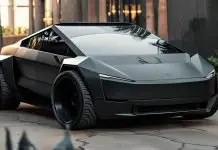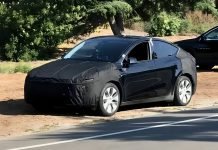Tesla’s recent deals allowing General Motors, Rivian, Volvo, Ford, and other prominent EV owners to utilize its Supercharger network highlight the company’s ability to transform its charging infrastructure into a competitive advantage.
Over the past year, Tesla has been strategically leveraging its Supercharger network, intensifying the infrastructure competition within the EV industry. This week, Tesla solidified its dominance as General Motors became the second major automaker in less than two weeks to announce its integration with Tesla’s charging ports.
Tesla’s early recognition of the significance of a comprehensive charging network has given it a head start over traditional automakers in the race for EV supremacy.
By effectively capitalizing on its Supercharger strategy, Tesla has positioned itself as a visionary leader, setting the stage for a promising future in the electric vehicle market. But is that all behind the foresighted move? We do not think it is just about dominance.
Let’s get into the deep-diving real reasons why Tesla is opening its arms to other leading automakers!

Table of Contents
Tesla Supercharger Network
Among the various EV manufacturers and charging networks, Tesla’s Supercharger network stands out as the largest and most reliable in the United States. If you drive a Tesla, it’s pretty convenient.
You can easily find Superchargers using the navigation app, pull up to one, and plug in your car. It usually works smoothly. However, until now, only Tesla owners could use the Superchargers.
But things are changing.
Tesla has hinted that they will allow other EVs to use their Supercharger network, and now it’s confirmed that they will open 7,500 chargers to vehicles that use the Combined Charging System (CCS), which is what most other EVs use. This is a big step towards making charging more accessible for all EV drivers, not just Tesla owners.
Why Tesla Is Opening Doors To Other Automakers?
In a significant move, Ford became the first major US automaker to announce that its new EV owners in the US and Canada will have access to Tesla’s Superchargers starting spring of 2024.
This decision by Ford marks a notable departure from the cat-mouse competitive price wars between the two companies. Ford’s existing EV models, such as the Mustang Mach-E, F-150 Lightning, and E-Transit, can also be retrofitted with an adapter and work on software to utilize Tesla’s Superchargers.
This strategic partnership between Ford and Tesla signifies a growing trend of collaboration among leading automakers in the EV industry. This would provide customers with enhanced charging options and increase the convenience and accessibility of charging infrastructure.
Following Ford’s lead, General Motors (GM) also joined the bandwagon in June 2023, adopting Tesla’s North American Charging Standard (NACS) as the standard for its EVs.
But what actually is in it for Tesla? Let’s find out!
$7.5 Billion Subsidies & Grants
The White House recently announced that EV charging stations using Tesla’s North American Charging Standard (NACS) plugs will be eligible for substantial federal subsidies. However, to qualify for these subsidies, the charging stations must also incorporate the “Combined Charging System” (CCS).
This clever requirement says that the charging infrastructure needs to support both Tesla’s NACS plugs and the industry-standard CCS plug to receive financial support from the government.
This move by the White House aims to encourage the development and deployment of EV charging stations that can cater to a broader range of electric vehicles.
Tesla’s charging ports are rapidly gaining widespread acceptance and becoming the standard in the electric vehicle market. As legacy automakers like Ford and GM embrace Tesla’s charging technology, it has become so prevalent that even the US government cannot ignore its ubiquity.
In a significant smart move, the White House explicitly included Tesla in its $7.5 billion plan to construct new, high-speed charging stations along 7,500 miles of the country’s busiest highways.
This would be the first time the administration has acknowledged Tesla’s contribution and recognized the need to incorporate its charging infrastructure into the national charging network. Yes, it does show Tesla’s dominance in the electric vehicle space and the importance of its charging technology in supporting the widespread adoption and viability of EVs across the United States.
Charging Standardisation
Tesla owners often express their satisfaction with the convenience and simplicity of Supercharger stations. The process is straightforward: drive up, plug in, wait for around 15 to 30 minutes to charge up, unplug, and continue on their journey. Thanks to the ample number of chargers available at each site, it’s rare to find any queues.
But, it is rather confusing with other public charging stations with various companies operating their own charging networks, each with its own apps and payment methods.
Also, the varying locations of charging ports on different vehicles, even within the same automaker’s lineup, pose logistical challenges for parking and charging. Some drivers may also encounter compatibility issues where their vehicle is not compatible with a specific charger making charging standardization more necessary.
SAE International, a US-based standards body, made an announcement to standardize the Tesla North American Standard (NACS) connector in North America. Tesla’s electric-vehicle charging technology is rapidly gaining traction and positioning itself as the potential standard in the region.
Tesla’s move to open up its once-exclusive charging network to other automakers has garnered support from notable industry players such as Volvo Car, General Motors, Polestar, Ford, and Rivian.
These companies have chosen to adopt Tesla’s charging design, deviating from previous efforts by the Biden administration to establish the Combined Charging System (CCS) as the dominant charging standard in the United States.
Making Superchargers Into A Long-term Business
As the NACS connector becomes the North American standard and Tesla’s charging lead expands, analysts are attempting to determine the value of Tesla’s Supercharger network.
According to a Tesla expert, the Supercharger network could be worth more than $100 billion. It is the only global fast-charging network for electric vehicles and, in North America, it is the most extensive and reliable option available.
Originally, Tesla created the network to serve its own customers without aiming to make a profit from it. However, they expected that the overall EV charging industry would grow more.
But that hasn’t happened as expected in North America, making Tesla’s network stand out even more. As a result, automakers like GM and Ford are now adopting Tesla’s NACS connector to give their EV buyers access to the Supercharger network. Smart move Tesla!
Making EVs More Reliable
Despite the recent collaboration between Ford and Tesla to grant access to the Supercharger network, it’s important to critically evaluate the motives behind this decision.
Ford’s move is likely driven by the Supercharger network’s superior reliability ratings, consistently surpassing other EVs and networks that utilize the CCS connector. Consumer satisfaction surveys, including those conducted by automotive research giant J.D. Power, consistently rank the Supercharger network as the highest in terms of consumer satisfaction.
The latest E-Vision Intelligence Report by Power reveals that a significantly lower percentage of Tesla drivers face challenges in charging at Supercharger stations compared to other networks. Only 3.9% of respondents reported being “unable to charge” on the Tesla Supercharger network, whereas a staggering 21.6% faced similar issues with non-Tesla networks, excluding Tesla Destination chargers.
According to J.D. Power’s scale, Tesla owners scored an impressive 734 points, while owners of other EV brands averaged a significantly lower 558 points.
The difference in these satisfaction ratings clearly shows the significant lead Tesla has established in terms of reliability compared to its competitors. These statistics directly translate into higher satisfaction levels among Tesla EV owners regarding public charging networks.
While the Ford-Tesla collaboration may seem like a strategic move, it raises questions about the reliability and overall satisfaction levels of other charging networks and EV manufacturers.
Ford’s decision to tap into Tesla’s Supercharger network highlights the recognition that Tesla’s charging infrastructure outperforms the competition.
The factors influencing EV adoption, such as the charging connector, hardware, industry standards, and the EVs themselves, play a crucial role in the overall acceptance and uptake of EVs. These considerations hold significant importance, especially as legacy automakers like GM and Ford, among others, strive to increase their EV production.
The absence of an adequate public charging infrastructure has been identified as the primary consumer barrier to EV adoption in recent times. This is followed by concerns related to range anxiety (the fear of running out of battery charge), charge time, and the lack of convenient home or work charging options.
Counter China’s EV Dominance
The widespread use of lithium-ion batteries in the approximately 25 million EVs currently on the roads worldwide is indirectly a result of American innovation. The initial concept for these batteries was developed by Exxon in the 70s; however, the oil giant did not support the invention.
Subsequent advancements, primarily driven by government research efforts, paved the way for the commercialization of lithium-ion batteries in electronic devices during the 1990s, eventually leading to their integration into EVs in the 2000s.
Despite the technological advantage of the United States in this field, the country did not witness the establishment of a domestic battery-manufacturing industry, which predominantly flourished in Asia.
Even Tesla, the dominant player in the EV market, has heavily relied on a partnership with Japan’s Panasonic Holdings Corp. to supply batteries for its cars in the United States. This dependence on foreign partnerships brings out the gap between American innovation in lithium-ion battery technology and the need to develop a robust domestic manufacturing sector to beat China.
The remarkable growth of the China EV industry can be attributed to the robust support provided by the sustained industrial policy of the Chinese Communist Party. China’s substantial government funding and strict limitations on internal-combustion vehicle sales play a pivotal role in nurturing a thriving battery industry.
China’s strict measures to limit ICE vehicle purchases incentivize the adoption of electric cars in the country. China’s strategic approach enabled the emergence of global battery giants like Contemporary Amperex Technology Limited (CATL), which currently holds the title of the world’s largest producer of lithium-ion batteries. With factories expanding into Europe, CATL exemplifies China’s success in cultivating a robust electric vehicle market.
A report from the Center for Strategic and International Studies reveals that between 2009 and 2021, the Chinese government injected over $130 billion worth of subsidies into the EV market, further highlighting the scale of China’s commitment and investment in this sector.
Why Automakers Join Tesla Supercharger Network Now?
Tesla’s charging network stands out not only for its reliability but also for its unique ownership structure. Unlike other public charging networks, Tesla’s Supercharger network is built, owned, and operated by the automaker itself, making it a distinct advantage.
With over 4 million EVs sold, more than any other manufacturer, Tesla’s charging infrastructure has become a formidable asset.
In recent weeks, several automakers have made announcements about their intentions to utilize Tesla’s Supercharger network and the North American Charging Standard (NACS) plug.
This news has generated a range of reactions from Tesla owners and shareholders, with opinions varying. However, Ford CEO Jim Farley has expressed a positive perspective on the development. Farley highlighted the strengths of Tesla’s charging network, recognizing that it would be beneficial for Ford customers.
As anticipated, an increasing number of carmakers are forging partnerships with Tesla to gain access to the Tesla Supercharger network for their electric vehicles.
Following Ford’s collaboration, other prominent automakers such as GM, Rivian, and several charging networks have joined forces with Tesla on this initiative. The latest addition to this list is Volvo Cars, which has announced its partnership with Tesla to leverage the Supercharger network.
By teaming up with Tesla, these automakers aim to enhance the charging experience and provide their customers with access to a reliable and extensive charging network.
Starting in 2025, Volvo’s new electric vehicles will be equipped with the North American Charging Standard (NACS) charging port. This means that Volvo owners will be able to plug their vehicles directly into Tesla Superchargers without the need for an adapter. However, before this integration takes place, Volvo car buyers of electric models will be provided with a Tesla charging adapter, allowing them to utilize the Supercharger network starting in the first half of 2024.
While traditional automakers are now investing significant amounts to transition to electric vehicles, Tesla recognized the significance of a robust charging network much earlier and with greater emphasis than its competitors.
This foresight has given Tesla a head start in establishing a comprehensive and extensive charging network, which has contributed to the brand’s success and popularity among EV owners.
What To Expect In The Future?
Tesla has made significant expansions to its Supercharger network, increasing the number of ports to nearly 19,500 nationwide in the first quarter of the year. The U.S. Department of Energy reports that Tesla currently provides a remarkable total of 2,025 station locations and an impressive count of 21,713 ports across the country.
While the Supercharger network may have fewer locations compared to the CCS standard (which will still be supported through adapters), it stands out for its reliability and fast charging capabilities, making a notable difference for Tesla owners.
However, several critical questions remain unanswered.
One of them is whether the adoption of the Tesla standard by other charging network operators will result in a noticeable improvement in reliability compared to CCS. This would be a crucial question for automakers opting for Tesla’s NACS connector, including Ford, GM, Rivian, Volvo, and Polestar.
These manufacturers have announced plans to support Tesla’s fast-charging format, starting in 2024 with the use of adapters.
This shift will make over 70% of the new EV market compatible with NACS. As Hyundai, Stellantis, and the Volkswagen Group brands also evaluate the idea and with the SAE establishing it as a standard for interoperability and manufacturing, it seems unlikely that EVs with the CCS port will represent more than a small fraction of the market.
There are also concerns about whether the high satisfaction levels experienced by Tesla owners in the Supercharger network will remain the same when drivers of other EV brands begin utilizing it. Additionally, the question arises as to whether the scaling up of the Supercharger network will ultimately have a positive or negative impact on Tesla owners.
These uncertainties highlight the need to carefully evaluate the implications and potential outcomes of expanding the Supercharger network and its impact on overall user satisfaction in the coming times. We would have to wait and see what happens once this happens.
Bottomline
The potential impact of opening Tesla’s Supercharger network to other brands is uncertain and could have both positive and negative implications.
On one hand, allowing other EV brands to use the Supercharger network could result in longer wait times and increased congestion at charging stations, particularly during busy periods. However, on the other hand, this move may incentivize Tesla to expedite the development and deployment of their advanced V4 hardware, which is necessary for supporting vehicles from manufacturers such as GM, including models like the GMC Hummer EV, Chevy Silverado EV, and even Tesla’s own Cybertruck.
This could lead to a faster expansion of the Supercharger network, benefitting all EV owners by improving charging infrastructure and availability. The overall effect on Tesla’s brand respect will depend on how effectively the company manages the increased demand and potential challenges that come with accommodating a wider range of vehicles on its charging network.
What do you think is in Elon’s mind behind the recent news? Do share your views on Tesla opening its Supercharger network to other automakers with us in the comments.


















